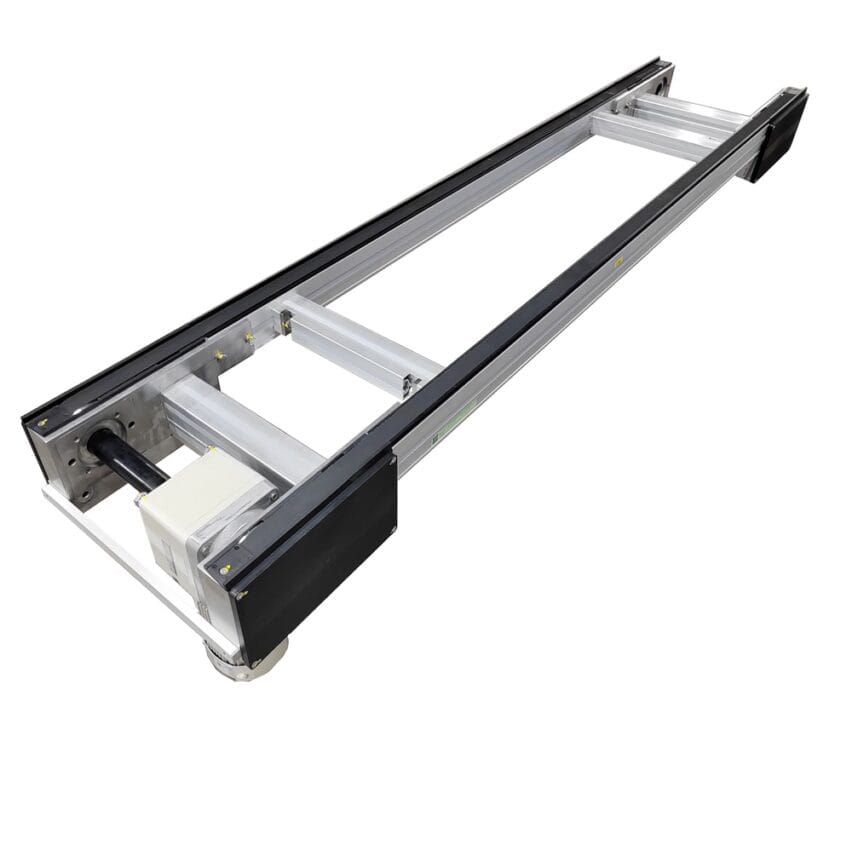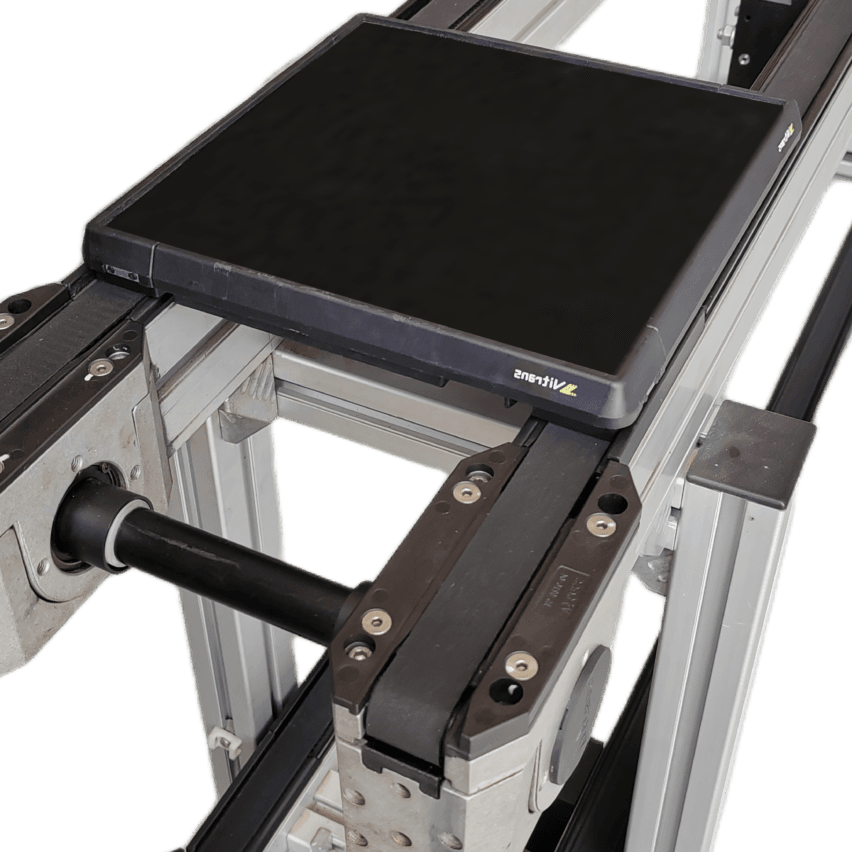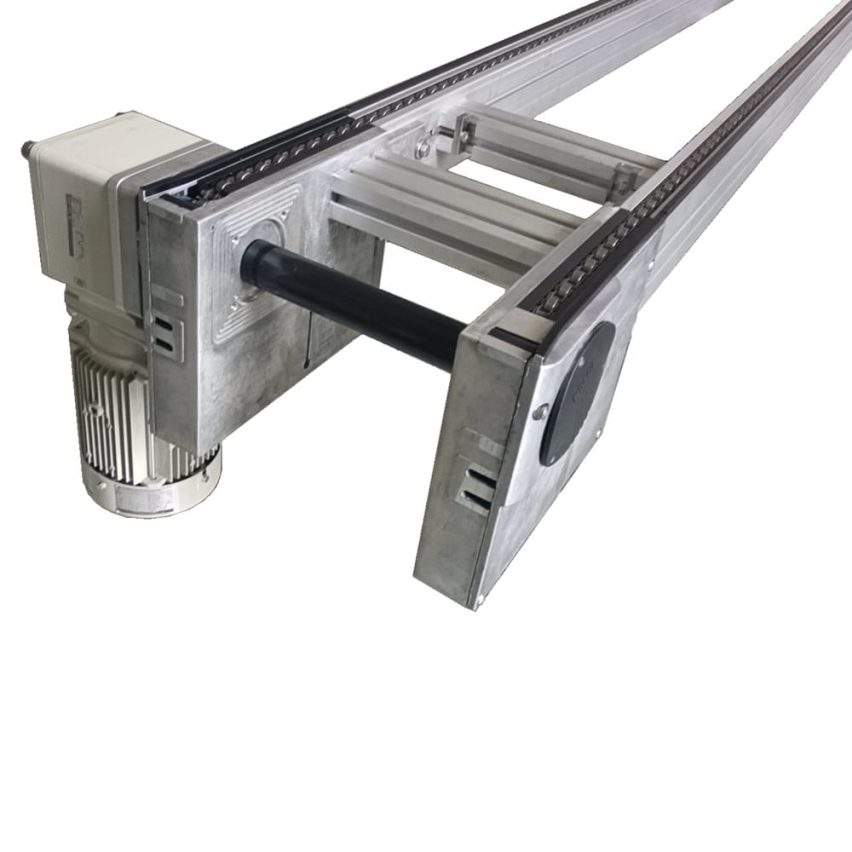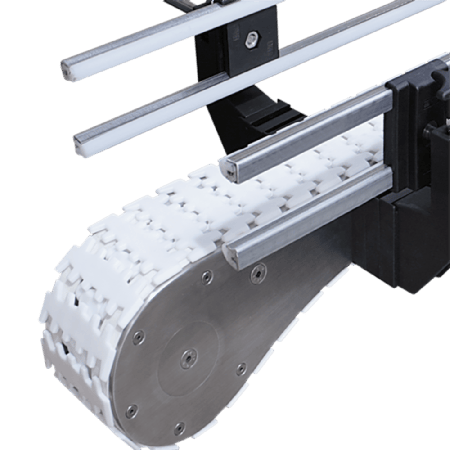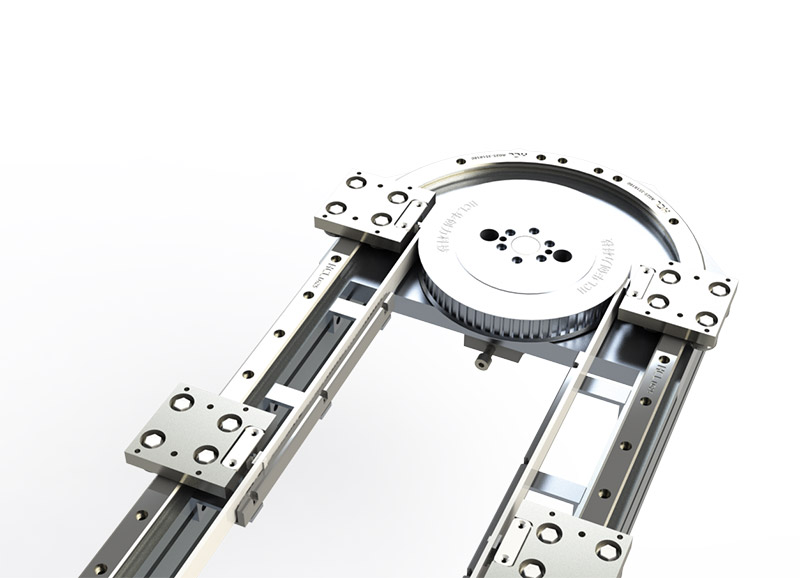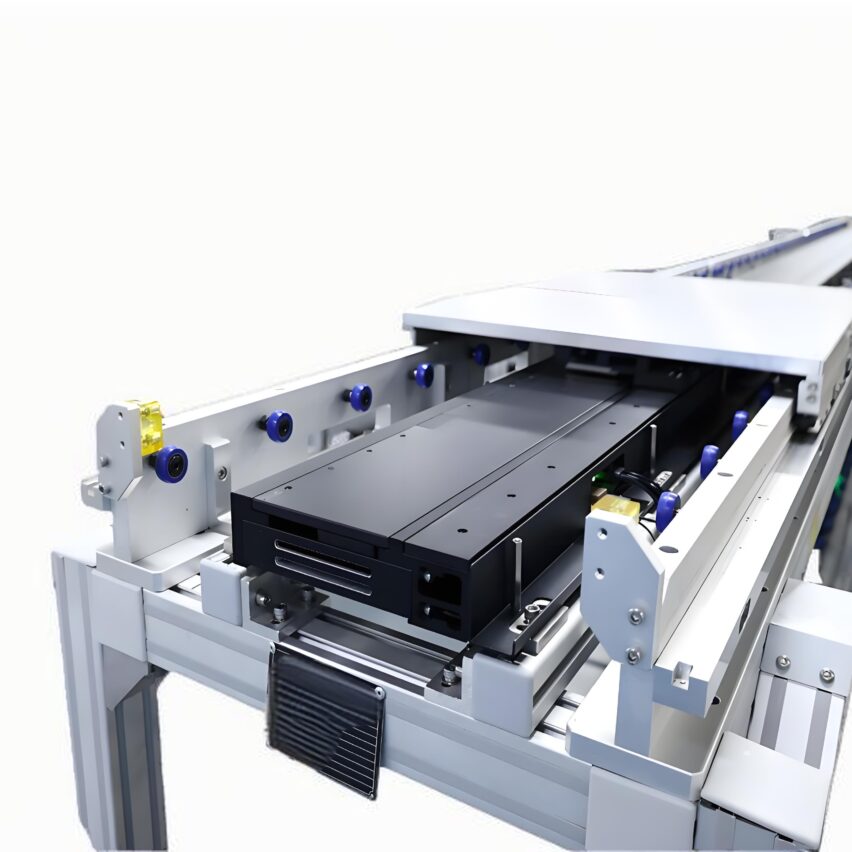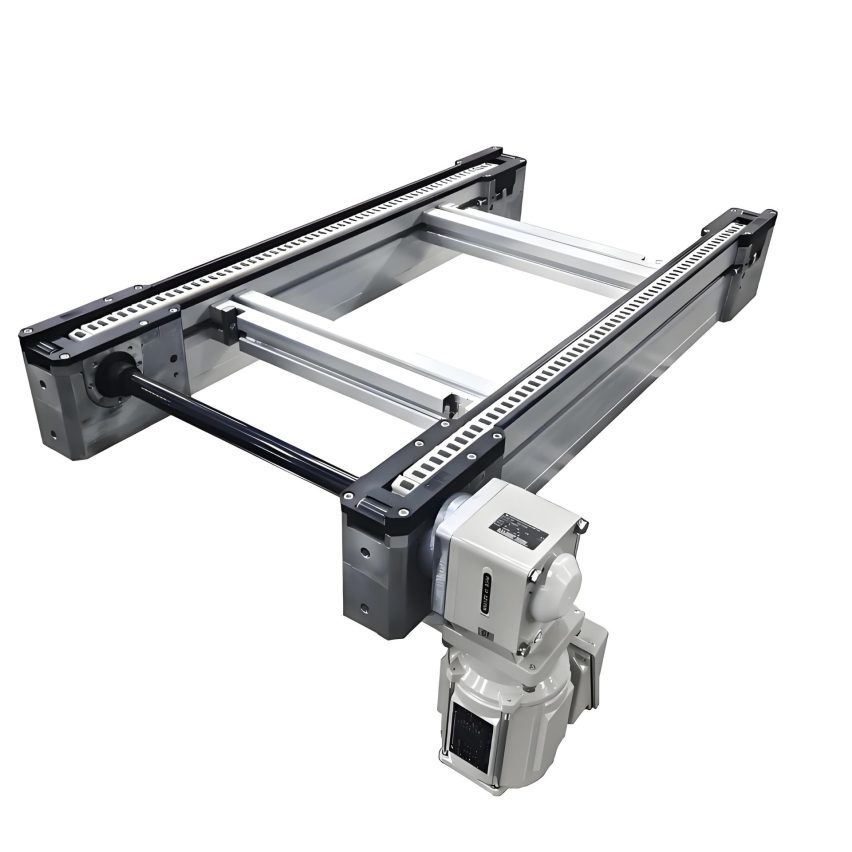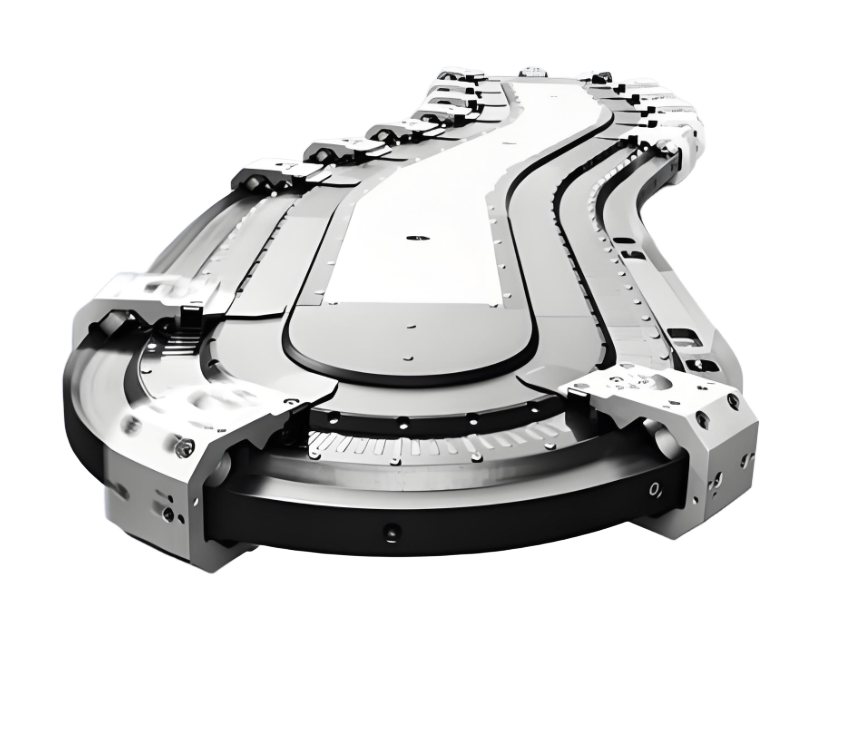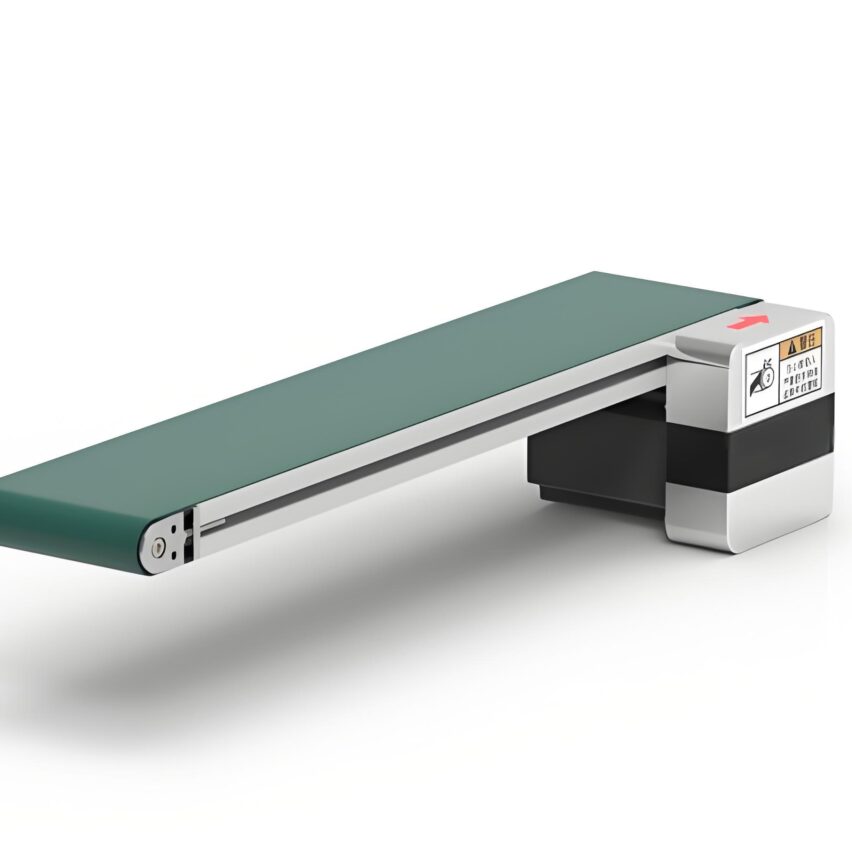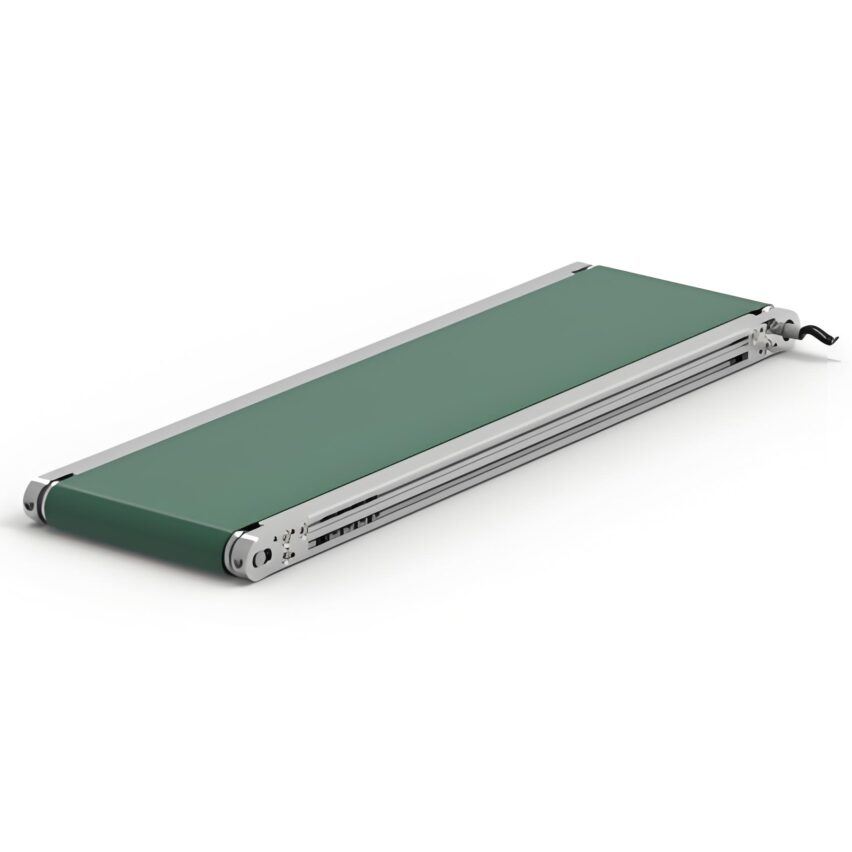One.核心优势:差速传动的物理智慧与结构创新
单层倍速链的竞争力源于“链慢板快”的差速设计。当链条以2-20米/分基础速度运行时,工装板因滚轮与导轨的摩擦差,实际移动速度可达链条的2.5-3倍。这一机制通过三组精密结构实现:
- Composite Roller ChainThe engineering plastic roller diameter is larger than the chain pitch, forming a lever-type incremental pivot point, giving the workpiece high kinetic energy;
- Friction Slip Control: Controllable sliding difference is retained between the work plate and the rollers, with the stopper to achieve ±0.5mm accurate stopping, leaving an operating window for the assembly process;
- circular one-piece layout:单层闭环设计消除双层系统的回板机构,故障点减少30%,空间占用降低40%。
personal viewpoint: This design is in factThe art of temporal displacement of mechanical energy——以低速链条换取高速工装板,既降低传动损耗,又通过极简结构化解中小企业的空间与成本约束,堪称“用物理杠杆撬动生产效率”的经典范式。
Two.结构设计:模块化与可靠性的工程哲学
1. The pragmatism of minimalist architecture
- Modular Rapid Deployment: Standard interfaces are used for guide rails and chains, reducing the cycle time for line modification to 3 days, and supporting seamless integration with roller lines and jacking translators;
- Flexible Adaptation of Accumulation Functions: Blocker for workpiece staging, allowing asynchronous manual inspection and precision assembly;
- Lightweight load optimisationNylon/Carbon Fibre rollers with a load capacity of up to 80kg/m² cover the needs of 90% light industry.
2. The balancing act of durability and silence
- Low noise operation (≤70 dB): Engineering plastic roller with aluminium alloy guide rail, friction coefficient is controlled within 0.08;
- Anti-Aging StrategiesNickel-plated chain plate with 3 times higher corrosion resistance, more than 50,000 hours of life in dust-free environment, and 40% lower maintenance cost.
typical case:深圳电子厂采用后,故障率下降60%,维护人力减少50%。
Three.Performance parameters: data defining competitiveness in light industry
| norm | Single layer speed multiplier chain | Industry reference values |
|---|---|---|
| Line length | Single drive up to 40m | Double layer needs to be driven in sections |
| Conveying speed | 2-20m/min stepless speed regulation | Triplex chain fixed magnification only |
| Dynamic positioning error | ±0.5mm (servo-controlled) | Belt line ≥ 2mm |
| Initial input costs | $20,000-$80,000 | Double layer system $100,000 - $200,000 |
Exclusive validation data: 83% daily output <800 pieces of enterprises in East China after the adoption of single-layer chain, ROI reaches more than 200%.
Four.Application Scenario: Gold Partner for Light Industry
1. Electrical and electronic assembly
- High-speed and high-precision conveying: The tooling board matches the circuit board soldering at 15m/min and the anti-static design safeguards sensitive components;
- Spatial adaptabilityHeight adjustable range of 500-1000mm, suitable for small and medium-sized plant floor height restrictions.
2. Clean food and medical production
- Hygiene Compliance: Stainless steel is GMP certified and resistant to alcohol wiping and 135°C steam sterilisation;
- Debris rate control: Smooth conveyance of the work plates reduces the glassware fragmentation rate to less than 0.3%, far exceeding that of belt lines.
Industry Insight: When capacity demand is <1000 pcs/day, the marginal benefits of single-layer chains crush complex systems -Avoiding paying for redundant features is the essential logic of lean manufacturing.
Five.Future Evolution: The Double Revolution of Intelligence and Materials
1. Intelligent Enabling Pathways
- Predictive maintenance: Tension sensor + AI algorithm warns of link fatigue 14 days in advance to reduce unplanned downtime;
- Dynamic traceability: RFID chip integration for full process tracking of tooling boards and MES system to optimise scheduling beats.
2. Material science breakthroughs
Carbon fibre rollers exceeded the load limit of 120kg/m² in the test, with a weight reduction of 30% compared with engineering plastics and a further reduction of 15% in energy consumption.
Exclusive Predictions: Single-layer chains will reach 601 TP3T penetration in flexible microfactories by 2028, with modular design leading to module recycling rates of over 901 TP3T and carbon footprint reductions of 351 TP3T.
Self-questioning on core issues
Q1: Which companies should most choose single-layer multiplier chains?
"Lightweights" for small- and medium-scale production::
- 3C electronic factories with daily output of ≤1000 pieces (e.g. earphone, charger production line);
- Customised workshops with multiple batches and small quantities (e.g. industrial design proofing centres).
Core logic: avoid paying a premium for equipment that does not meet capacity thresholds and invest capital in core process upgrades.
Q2: How to break the bottleneck of carrying capacity of single-layer chain?
three-stage enhancement strategy::
- Structural innovations: Double-row chain layout upgraded to 160kg/m²;
- Material upgrade: Replacement of steel rollers for heavy-duty scenarios (limit 300kg);
- Intelligent Protection: Overload auto-stop + real-time tension feedback.
Q3:为何说单层链是技术迭代的“安全跳板”?
Gradual escalation with manageable risk::
- Initial cost savings are used for technical team training;
- Standardised interfaces support subsequent access to AGVs and robotic arms.
Essence: Transform "hard inputs" into "soft power" reserves to match the life cycle of enterprise growth.

